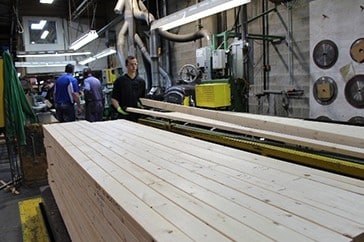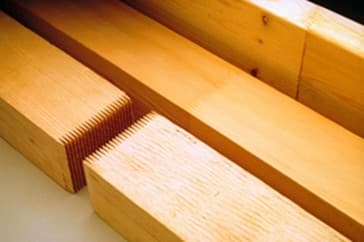
Even though small and unorganised local players continue to dominate the furniture market, over the last decade, there has been a surge in the contribution of organised players too, especially with the recent entry of global giants like Ikea. A growing market share along with the changing scenario has made the furniture industry motivated to adapt best practices – right from sourcing, manufacturing, distribution to skilled resources.
Here are some recommended practices for furniture manufacturing:

Selecting The Right Wood
It is important to carefully choose the right kind of wood, depending on the requirement of interior or exterior application. What also needs to be considered is its specie – moderately durable with proper care for interiors, or naturally durable for exteriors.
For interior applications, Western Hemlock, Douglas fir or SPF species are recommended, whereas for exterior, Yellow cedar and Western Red cedar are ideal. Design is another important aspect of the decision making process, along with working and finishing properties. More importantly, costs, availability, certification and sustainability need to be considered too.

Sorting and Storing
Wood should be meticulously sorted basis the specie, size, grade, and moisture content. Handling and management is critical, wherein special care should be undertaken for storing wood. If partially finished, it shouldn’t be kept in direct touch with the floor and wall. Stacking should be as per the specie, grade and size, with visible marking and labelling, and it must be well covered.

Joinery
Woodworking joints enable woodworkers to create various products through timber boards. The purpose of wood joints is to provide strength, flexibility, durability, toughness and appearance. The availability of its various styles provides a plethora of creative options to put together different products.
Characteristics of joinery depend on the quality of craftsmanship that is involved and the integrity of wood. From puzzles to houses – woodworking joints are a part of our daily lives.
For best manufacturing results, we need to keep the following in mind:
- Understand your wood and its characteristics thoroughly
- Follow simple and effective practices
- Use quality machines and tools
- Use good quality penetrating wood coatings
- Opt for certified, seasoned and graded wood
With evolving times, it is essential to go beyond the world of mere carpentry and focus on the entire ‘Skill India’ ecosystem at large. It’s time we busted certain myths and eliminated the stereotypes associated with carpentry, and instead, encourage gender-neutrality within the woodworking industry. Nowadays, a large chunk of woman talent has also been coming forward and participating in wooden crafts and workshops, which is a positive step towards further strengthening the industry with larger prospects.
It is important is to acquire the required woodworking skills to become an efficient and successful wood-worker. The furniture manufacturing sector has ample career prospects, with an array of training programs for aspirants, in order to continue boosting it across the country.
India is known to have used wood traditionally to manufacture wooden products. Due to its longevity, Canadian Wood species are extensively used in various applications.
To know more, watch the entire webinar.
Note: All aforementioned statistics are cited from the webinar.


